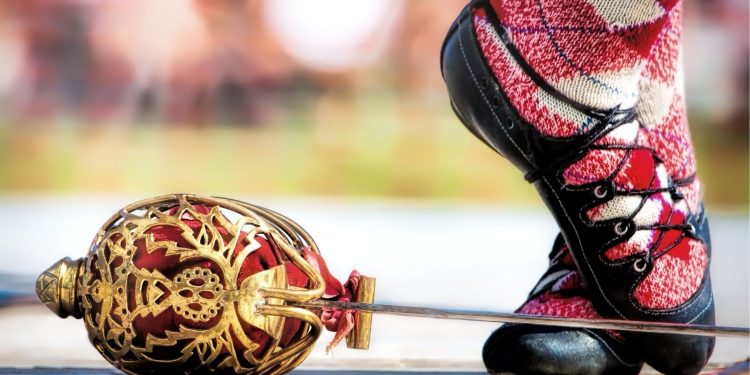Scottish and Irish dancing might have a few resembling factors; however, what’s truly amazing are the things that set these two beautiful forms of dance apart.
Without a keen understanding of the two, Scottish Highland and Irish dances may appear very similar. But akin to the cultures of these gorgeous regions, their dancing and the tradition behind them are distinctive. Below are some key differences between Irish and Scottish dancing.
Gestures and Movements
Scottish Highland dance is known for being more boisterous in movement than its Irish counterpart. Highland dance requires many “turn out” movements, wide-knee stances, and hand gestures during routines. On the contrary, Irish dance requires almost no hand motion, dancing in place, tight-knee stances, and more technically precise footwork.
Types of Footwear
There are also differences in the footwear that Irish and Scottish dancers wear. For instance, Irish dance often requires different kinds of shoes for various dances. Types of footwear fall into one of two categories: hard and soft. “Hard shoes” like the Irish jig shoe are used for Irish stomp, as they often have fiberglass tips that make a sound, like tap shoes. While soft shoes, or “ghillies,” are more simply designed, made from leather, and laced with thin straps.
Scottish dance also entails dancers wearing specific kinds of shoes. However, in Scottish Highland, dancers only ever wear “ghillies,”; thin, leather shoes almost identical to their Irish counterparts of the same name. The difference, however, is that Highland only ever uses the soft shoe, while Irish dance requires different footwear for different variations of dance.
Tradition and Attire
Other differences these two forms of dance share lie within the varying levels of tradition found in each. Scottish Highland dance is known for being starkly traditional in movement, attire, and the dances themselves. It carries its homage to Scottish tradition through the kilts, bonnets, blouses, and waistcoats that Highland dancers wear when they perform. Also, they often perform only the most traditional and revered national dances.
While upholding certain aspects of tradition, Irish dance is more dynamic and open to evolution. This creative and ever-changing nature is seen most clearly through their attire and the dances they perform. Instead of sticking with only the most traditional costumes, Irish dance is well-known for its bright and ornately patterned dresses, tiaras, and bountiful, curly up-dos. You can also see this colorful evolution through the dances themselves, as Irish dance uses other dance forms as influences that help add to their routines.
While Irish and Scottish dance may appear similar on the surface, more than a few peculiars set them apart. Hopefully, this quick guide has helped introduce you to some differences between Irish and Scottish dancing.



